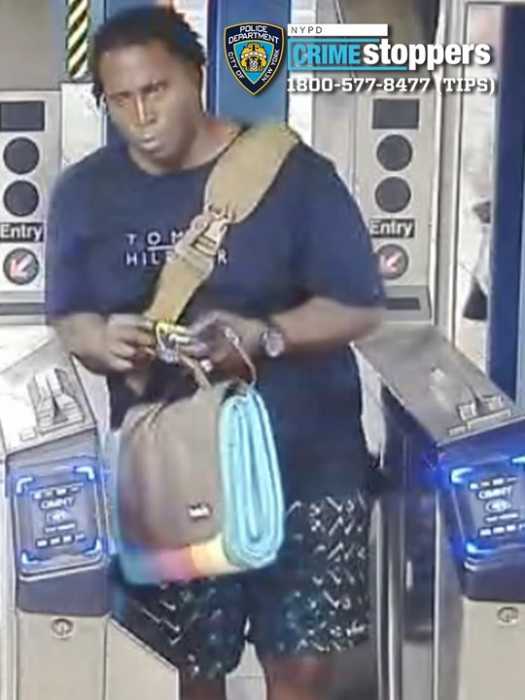By Thomas Tracy
A member of the New York State Traffic Mitigation Commission said last week that he found some merit to City Councilmember Lew Fidler’s multi-pronged answer to the mayor’s congestion pricing plan. It’s just a shame that the city, as well as the rest of the world, hasn’t caught up with the councilman’s imagination. Pointing to a study conducted by his group Environmental Defense, Traffic Mitigation Commission member Andy Darrell said that Fidler’s 9 CARAT STONE (Clean our Air, Reduce All Traffic and Support Transportation Operations in New York’s Environs) plan could “speed up traffic flow and ensure better safety” yet fails to accomplish what the mayor’s $8 levy on cars coming into lower Manhattan could. Fidler’s response to the mayor’s congestion pricing plan, which the Commission approved with just a few tweaks late last month, calls for an increase in the number of taxi stands and metered parking spots in the city, to relocate city agencies that do not need to be in Manhattan’s central business district into the outer boroughs and to step up traffic enforcement efforts. Fidler’s plan also calls for the construction of three tunnels: a trans-narrow tunnel to link the Staten Island railway to the New York City subway system, a tunnel to replace the elevated Gowanus Expressway and a cross harbor freight tunnel which Fidler believes will remove one million truck runs of New York City streets each year. Fidler also intends to improve the environment by pushing for the “immediate marketing and use of hydrogen fuel cell vehicles,” which have zero emissions. “We need to develop an infrastructure for hydrogen re-fueling,” Fidler said. “That alone will help to clean our air more than any congestion pricing scheme.” The councilman plans to pay for all of these improvements by implementing a “one third of one percent” payroll tax on businesses in New York City. “Fidler’s plan is a recipe for higher taxes and long delays,” said Darrell, who added that Fidler’s hydrogen car plan is “dependent on technology that even Detroit admits wouldn’t be around for 20 years.” “[Fidler’s plan] requires billions of dollars that New York City doesn’t have, includes an aggressive payroll tax and won’t cut the overall volume of traffic,” he said. “He proposes some large capital projects that could be good for the region but these are multi-billion dollar projects with no realistic funding sources. Whether or not our region can come up with the billions we need for these tunnels, we need to move forward with congestion pricing.” Unlike Fidler’s plan, the mayor’s congestion pricing proposal would “reduce traffic in all five boroughs on day one and raise the revenue we need to expand the traffic system on day one,” Darrell said, while admitting that Environmental Defense has also called for a cross-harbor tunnel. “But Environmental Defense doesn’t support doing nothing about congestion and doing nothing about improving our transit system for 20 years,” he said. Firing back, Fidler said that the Commission’s response to his hydrogen car proposal was a “self-fulfilling prophesy.” “Back in November, the entire New York Times Automobile section was dedicated to hydrogen cars, which they said would be available by next year,” Fidler said. “But if this city takes a position not to develop the infrastructure we need for hydrogen fuel cars, it will be a very long time before they get here.” Responding to criticisms of his regional payroll tax proposal, which Darrell claimed would adversely impact small businesses, Fidler said that his plan would bring in more than enough money to pay for transportation improvements. “It will bring in triple the amount of money that congestion pricing will,” he said. “If we took this money and used it the same way the congestion pricing revenue is used, we would have about $9 billion left over.” The payroll tax would be “more equitable and more widely spread,” he said. “And isn’t congestion pricing a tax?” he asked. While he said that he has come to know and respect some of the members of the Traffic Mitigation Commission as the debate rages on, Fidler still believes that “the fix was in.” “They wanted to come out with a plan that was modified in a way to get the required votes they need in the council and the assembly,” he said. “They looked at some of the alternative plans like mine and immediately recognized that they were beyond the four corners of the page their prevue was written on.” “Sometimes you need big ideas to make big changes,” he said. “When the congestion pricing plan is defeated in the city council, I hope people’s minds will be open enough to take my proposal and seriously consider it as an alternative.” “This was a commission that was created with representatives from every branch of elected government and I have never seen this level of research, discussion and work in a transportation project,” Darrell countered. “For Fidler to criticize the commission doesn’t make much sense to me.” The Commission’s congestion pricing proposal is at the heart of a $354.5 million federally funded pilot program that promises to fight traffic gridlock, improved public transportation to underserved areas and reduce pollution. But both the City Council and Albany legislators must approve the plan before the end of March if they hope to get their hands on the federal dollars needed to get the ball rolling.



































